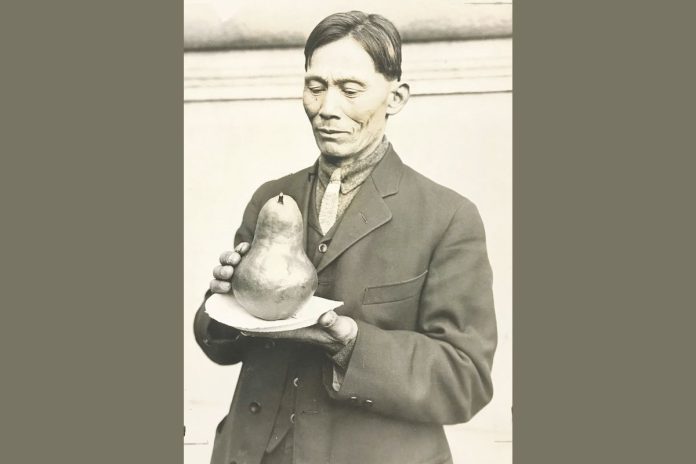A new exhibit at the Fremont main library, “Chinese Life & Contributions in Early Niles,” tells many small stories about early Chinese Americans. This community has been part of the region since the 1860s.
Three years after President Abraham Lincoln signed the Pacific Railroad Act in 1862, transcontinental railroad work started in Alameda Cañon, today’s Niles Canyon.
Incredibly, this iron road was built by hand—mainly by Chinese villagers from the Pearl River Delta near Canton in Guangdong province. Their work carved through the rugged rock-scape of Alameda Cañon and bears witness to the strength and tenacity of the unseen builders. Enormous effort was required to slice through this treacherous terrain. Despite the hazardous conditions and violence faced by the Chinese builders, they accomplished wondrous works.
Finally in 1869 the last leg of the transcontinental railroad was completed from Sacramento to the San Francisco Bay.
In late 1869, the country opened up to easy access from east to west and west to east. Our region started to feel the influence of better transportation of goods and people. Southern Alameda County became a burgeoning fruit growing and nursery region. An influx of new labor came, and some stayed on.
In the 1870 census records, Chinese names appeared throughout our historic towns, in many locations. For example, Vallejo Mills showed a boarding house of 36 Chinese railroad workers, along with other people related to the railroad.
Downstream from Vallejo Mills, the Shinn family lived—two parents and five children—in a tiny cottage on a big ranch along Alameda Creek. The 1870 census records that three Chinese workers lived next to the Shinn family—one servant and two workers.
Lucy Shinn’s letters have some enlightening details about these workers. In 1877 she wrote about fires set in the Township, the result of Denis Kearney’s Workingman’s Party which was terrorizing Chinese people and the people who employed them.
The archives of historic towns in Southern Alameda County still contain many hidden stories yet to be discovered, hidden in the records of ranches, nurseries, farms, industries and more. The records are often noted in ledgers, records of labor hired for harvesting fruit, in the census records or in rare photos of Chinese workers at a China Camp.
The Tri-Cities are lucky to have one detailed personal account from Dr. Joshua Fong, written about growing up in Washington Township in the 1920s to 1940s—hunting and fishing on the Creek, Niles Elementary School, Washington High School, school sports and teenage hijinks and lots of farm work.
Joshua Fong’s cousins and uncles worked and lived at the Shinn Ranch. The China Camp was located by the creek which provided water and easily accessible food, such as fish and pheasants. The camp had bunkhouses and a cookhouse. There was a cook and a barber.
Depending on seasonal activities, the number of men who lived in the Shinn Ranch China Camp increased as needed, up to 40 or 50. A “China Boss” contracted for that extra labor.
These large and small sketches and accounts create a rare glimpse of life in the Washington Township over nearly a century.
A speaker series follows the exhibit on Sunday, Oct. 19 from 1:30 to 3:30pm. Dr. Victor Wong will talk about the early railroad work in Alameda Cañon and about the workers. Janet Barton will give an overview of the Chinese Americans who lived and worked in Southern Alameda County after the railroad opened our part of the county up to the east.
The Chinese Bunkhouse Preservation Project at Shinn Historical Park & Arboretum was the catalyst of this history work, to preserve the last building from the Shinn Ranch China Camp.
Chinese Life & Contributions in Early Niles




